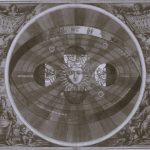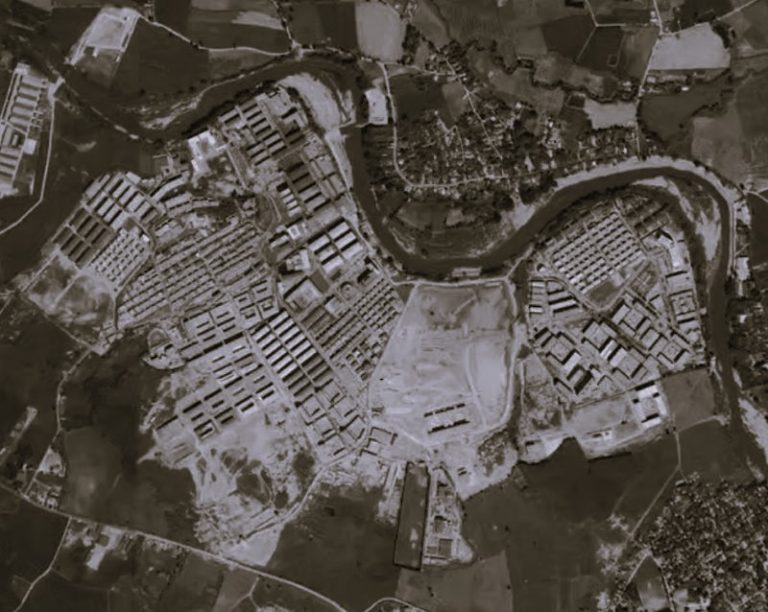
Thousands of images from the Pierre de Gigord Collection are now accessible online.

By Isotta Poggi
Department of Acquisitions of Exhibitions and Photographs
Getty Research Institute
Introduction
In the 1980s the French collector Pierre de Gigord traveled to Turkey and collected thousands of Ottoman-era photographs in a variety of media and formats. The resulting Pierre de Gigord Collection is now housed in the Getty Research Institute, which recently digitized over 6,000 of the nineteenth- and early twentieth-century photographs, making them available to study and download for free online.
From albumen prints to lantern slides, glass negatives and albums, the collection documents landmark architecture, urban and natural landscapes, archaeological sites of millennia-old civilizations, and the bustling life of the diverse people who lived over 100 years ago in the last decades of the waning Ottoman Empire.
The digitization project focused on photographs from the nineteenth century until World War I (Series I–VIII), resulting in 3,750 individual records of digital files. Research Institute photographers such as Lyndsey Godwin-Kresge took thousands of materials that are difficult to find, as they are preserved in the vaults with limited circulation, and transformed them into digital files.
Armchair Traveling to the Ottoman Era
The digitization of such diverse media, from long panoramas (Series IV) to pocket-sized cartes de visite, presented different challenges. The 10-part panorama of Constantinoplerequired stitching separate albumen prints together to create an imposing panoramic view of the skyline of Istanbul and the Bosporus in 1878. Now it may be viewed on a screen in its entirety.
Photographing the 50 hand-colored slides from the Viennese business Josef Sengsbratlnecessitated calibrating both front and backlighting to capture the warm tones of the color images as well as the business credit name and address. At the turn of the century, people would project these slides on a screen in educational settings or in private homes for personal entertainment, allowing them to become armchair travelers. Through these images they learned about Turkish women and men, crafts and trades, the landmark architecture of the Ottoman capital, government functionaries, and the geopolitics of the region.

The 82 glass plate negatives in the collection were digitized and turned into positive images to facilitate access to their imagery, which includes scenes such as this buzzing street in the European side of the capital at the turn of the century.
First-Person Perspectives

The digitization of over 60 photographic albums (Series I and II) allows us to access the unique personal narratives of collectors and photographers who traveled through Ottoman Turkey. In the album Türkei = Kleinasien 1917–1918 (Turkey = Asia Minor), a German military officer, yet to be identified, dedicated his photographs to a faraway “beloved Pauline.” This album documents—in great contrast to his romantic dedication—the presence of the German army in Turkey during the Armenian genocide.
In accordance with standard digitization practices, the album was photographed not only page after page but also image after image, allowing viewers to experience the images close-up in detail. The neat calligraphy of the image captions and well-composed arrangements of the photographs reveal the care the officer took in documenting the journey and mission. Photographs of cities, markets, and sites of destruction are recorded along with encounters with government functionaries such as the minister of war, Enver Pasha, the highest-ranking perpetrator of the Armenian genocide.

The album also includes street scenes and images of everyday life. There are photographs of street vendors and people including an unknown woman who smiles back at the photographer/officer.
An Obliterated Past

Scholars have already used the Gigord collection for research in multiple disciplines, from Turkish architecture, archaeology and antiquities, Byzantine and Islamic art, postcolonial studies, and the history of photography.
Here on The Iris, artist Hande Sever recently highlighted the central role Armenian photographers played in shaping Turkey’s national cultural history and collective memory. Sever notes how the archive offers visual records of an obliterated past, a world that disappeared due to ethnic conflict and cleansing.
The Gigord digitized images, with their records of people, architecture, urban spaces, and landscapes of a bustling world a century ago, make a noteworthy comparison with the work of the late Armenian photographer Ara Güler (1928–2018). His photographs and family history document the aftermath of World War II. Güler, who lost his grandparents to the Armenian genocide, worked for the photo agency Magnum and built an archive of 900,000 photographs.
Orhan Pamuk, the renowned Turkish writer who won the Nobel Prize for literature in 2006, used images from Güler’s archive to illustrate his novels set in 20th-century Istanbul. He also paid tribute to Güler in a New York Times opinion piece. Pamuk wrote that A look at nineteenth-century Turkey through photographs.er’s photographs are not just beautiful—they are important because of the connection between visual records and personal memories:
A street might remind us of the sting of getting fired from a job; the sight of a particular bridge might bring back the loneliness of our youth. A city square might recall the bliss of a love affair; a dark alleyway might be a reminder of our political fears; an old coffeehouse might evoke the memory of our friends who have been jailed. And a sycamore tree might remind how we used to be poor.

Directly and indirectly, both Sever and Pamuk comment on not only the importance of Armenian photographers in shaping Turkish national and cultural identity but also the value of the visual record as a memory of a lost world—one lost to the ravages of time and modernization, as well as war, nationalist agendas, and ethnic cleansing.
The digitized nineteenth-century images enable us to learn about the past—seeing Turkey’s diverse society, its traditions and customs, and its urban fabric—and understand the present, observing how certain sites and people, as well as social or political issues, have evolved yet still remain the same.
Losing the Aura of Materiality
In the digital environment, these images are removed from their original physical context. Presented without their physical supports, formatting, or sense of scale, some aspects of their materiality may elude us. Yet increased access to the photographs allows us to visualize and experience the past and create relevant connections to the present.
For instance, the peaceful intimacy of this scene of a man reading a letter to two girls transcends time. One can imagine how this photograph would have evoked indelible memories for whoever owned this image, keeping it treasured in a drawer, pinned to a wall, or perhaps mounted in a private family album.

Series III of the collection contains close to 2,500 individual prints that Gigord grouped by location or type. Although their original context has been lost, these images can now be reinterpreted in relation to one another, especially through the item-level cataloging and metadata carried out by Beth Guynn and her team. Lead Cataloger Beth Guynn was also responsible for initiating the digitization process with the help of interns Emily McKibben and Soohyun Yang in the early stages of the process of digitization.
The digital files can be accessed through the Getty Research Institute catalog as individual records or through the Gigord collection’s finding aid, where they are presented in their physical collocation within the larger context of the whole collection.
As Jasmine E. Burns, a metadata librarian at Cornell University, explains in her essay “The Aura of Materiality: Digital Surrogacy and the Preservation of Photographic Archives,” the process of digitizing a photoarchive—just like printing positive images from negatives—makes images available to a broader range of users. Separated from their original source, the images themselves (i.e., the content) take on new meanings and interpretations by existing in several contexts at once.
The aura of the materiality of the printed image may be lost in the process of digitization, but the lives of the people in the Gigord photographs—their gestures and poses, expressions, emotions, and actions—can be reinterpreted as their histories are shared more widely. The image below shows a composition of five photographs of Trabzon, a city on the coast of the Black Sea. The three views of the city on the bottom provide the setting for highly contrasting narratives: on the top row the dead bodies of two Kurdish bandits, outnumbered and executed by a group of over 20 armed men, are juxtaposed by the elegant posture of a couple posing for the camera, presenting diverging realities where life and death go on.

Two parts of the Gigord collection were beyond the scope of this project so not digitized: the press photographs documenting the modernization of the Ottoman Empire and its transition to the Republic of Turkey and the archival documentation on photographic studios (Series IX–X). These materials can be accessed by visiting the Getty Research Institute Special Collections in Los Angeles, where the original photographs from the entire Gigord collection are preserved.
Originally published by The Iris, 12.12.2018, under a Creative Commons Attribution 4.0 International license.







